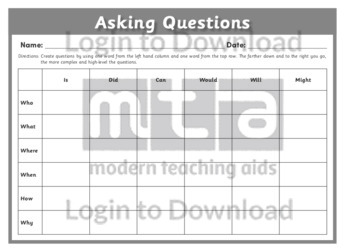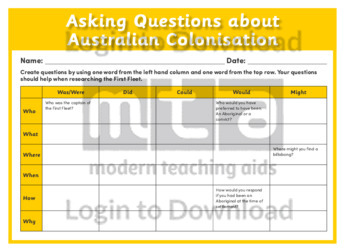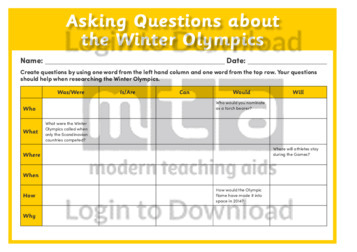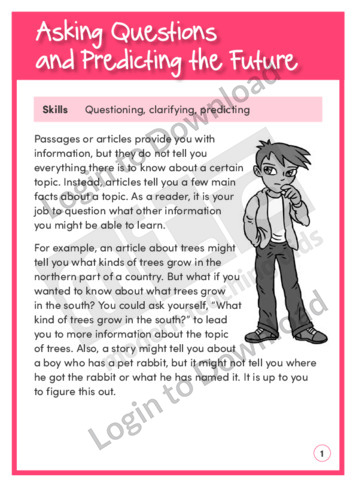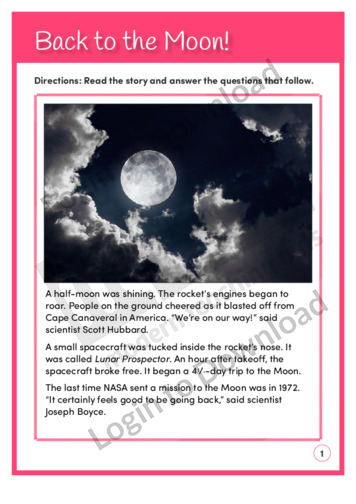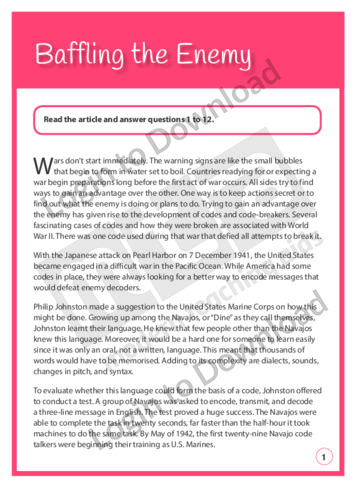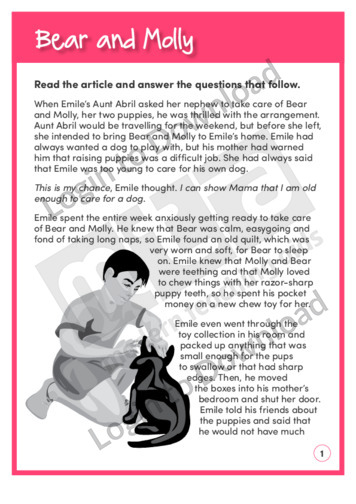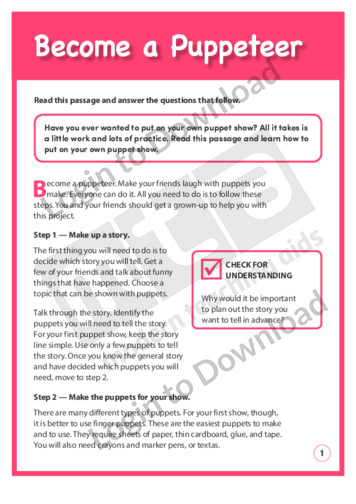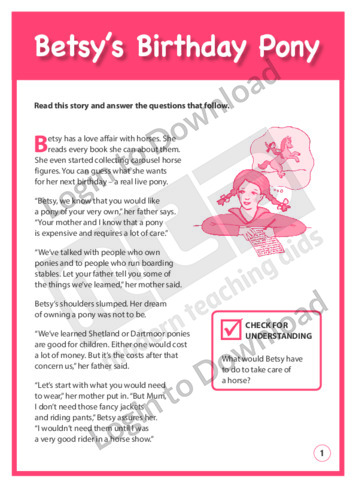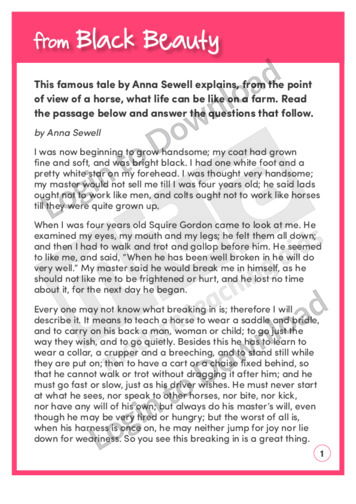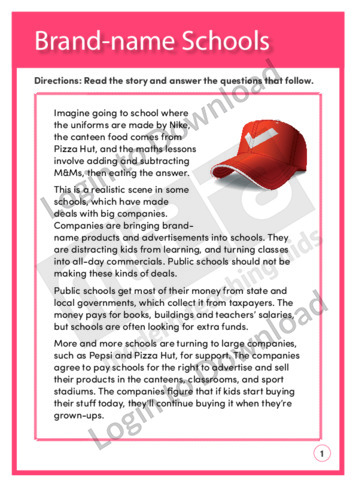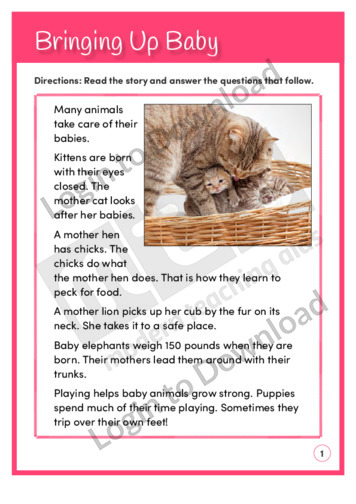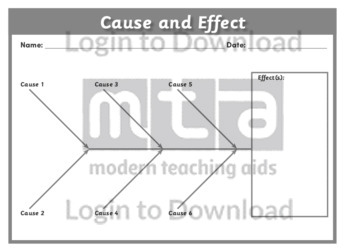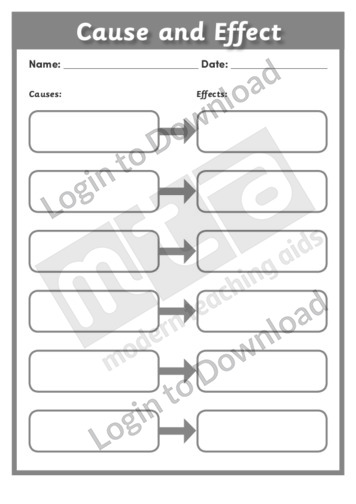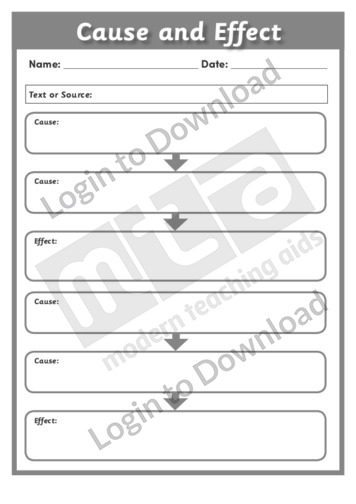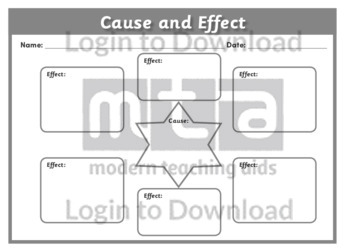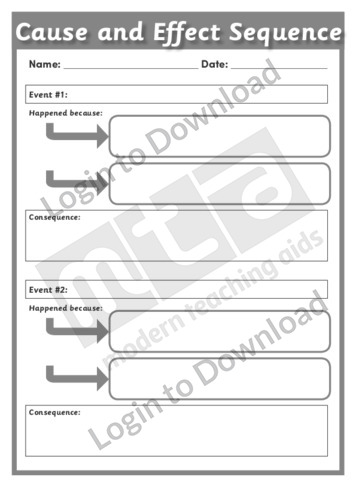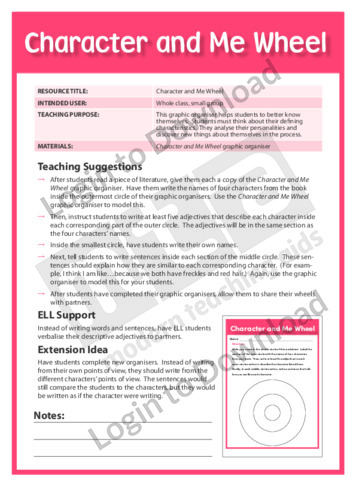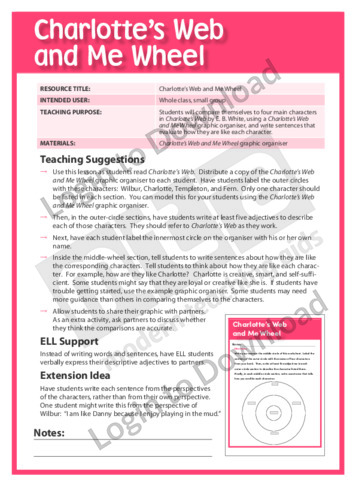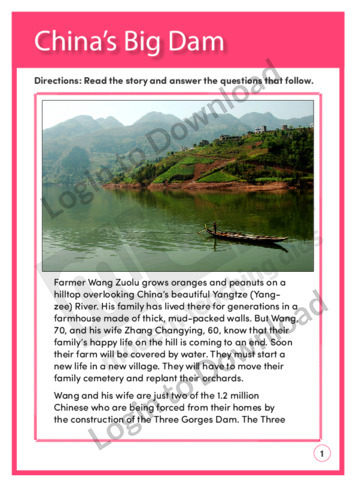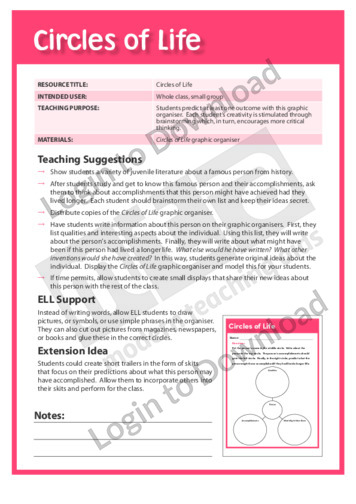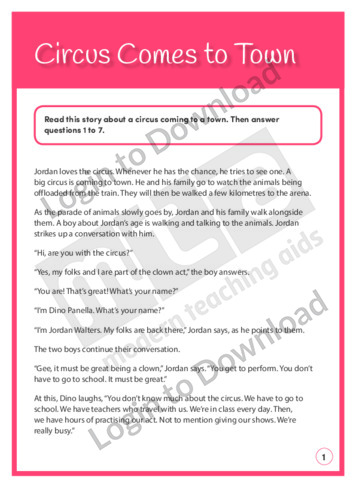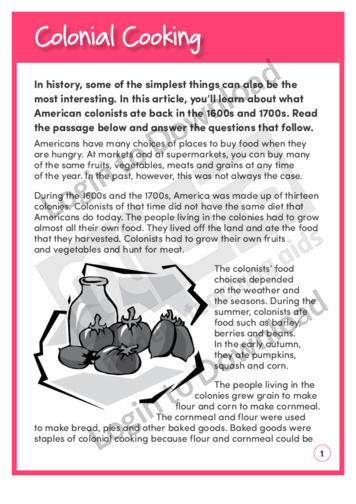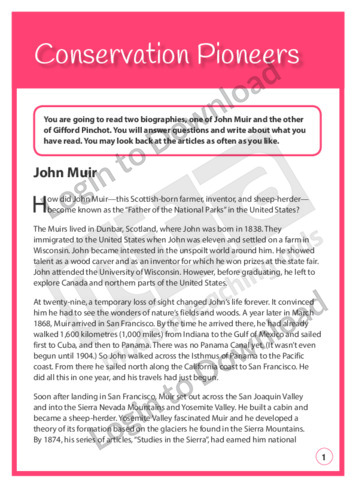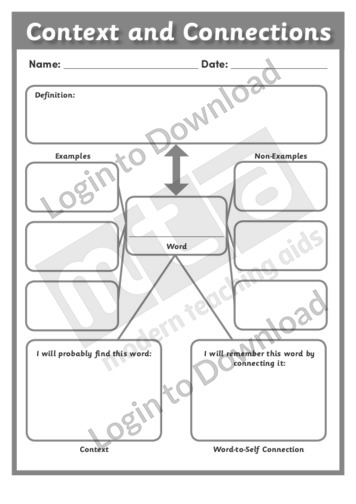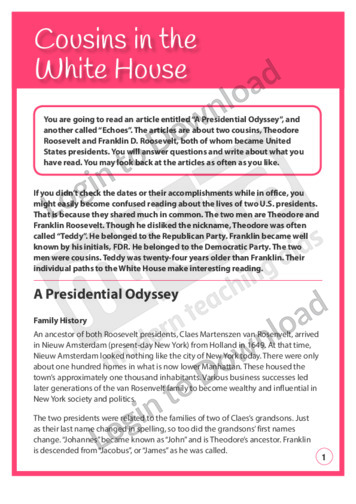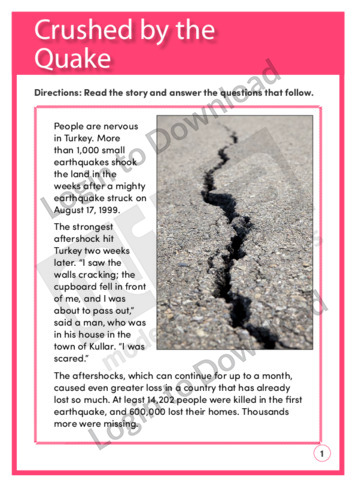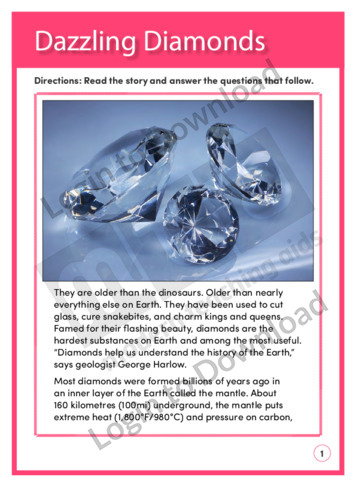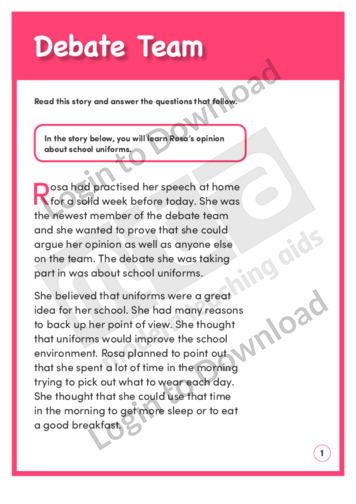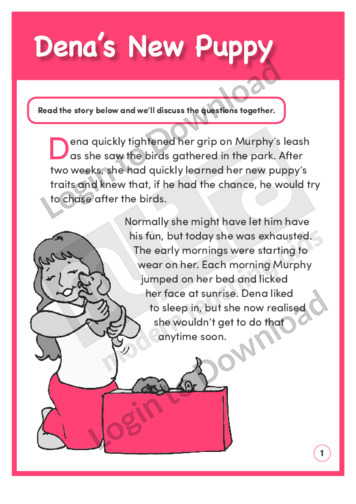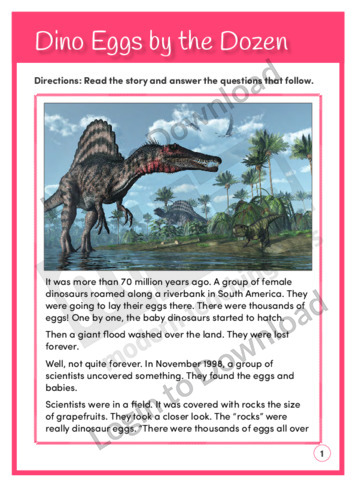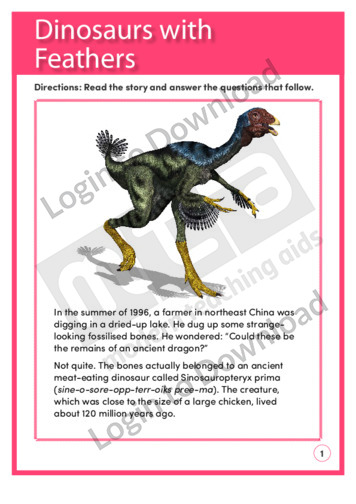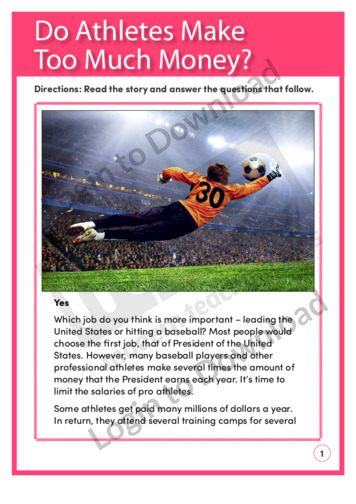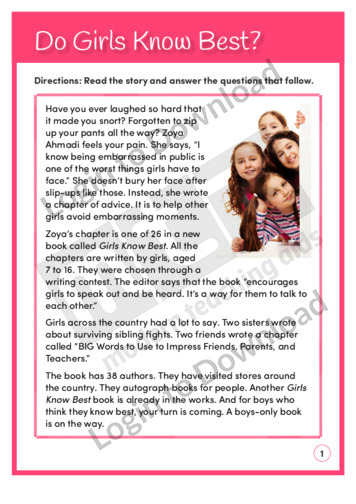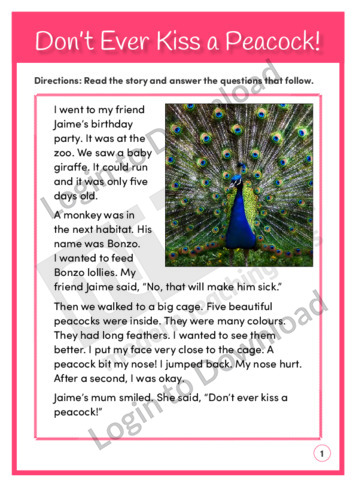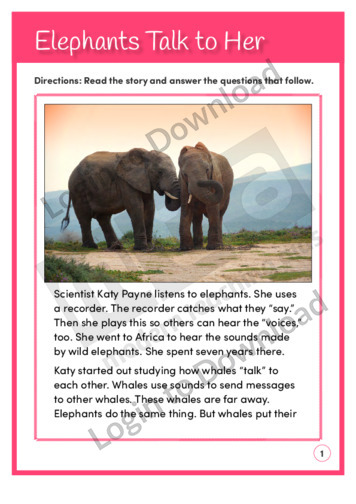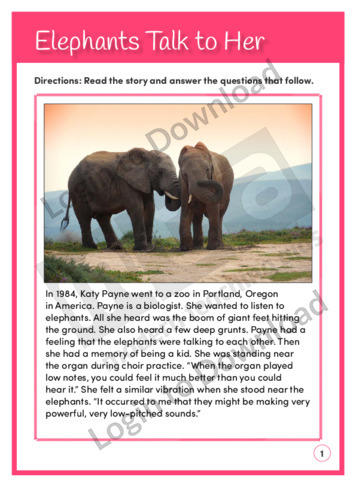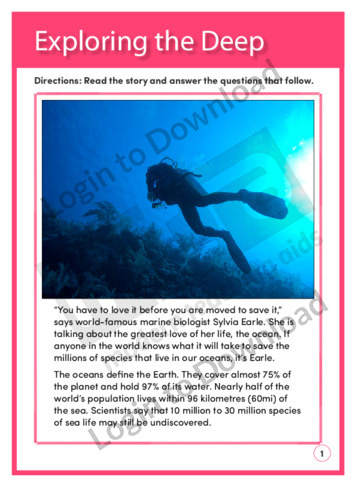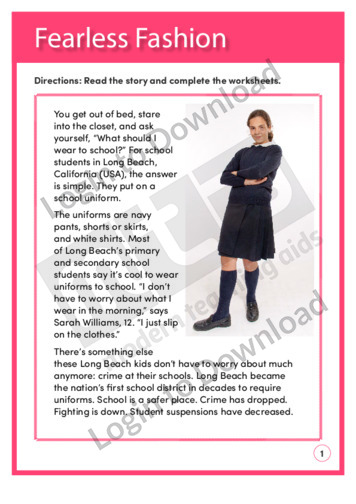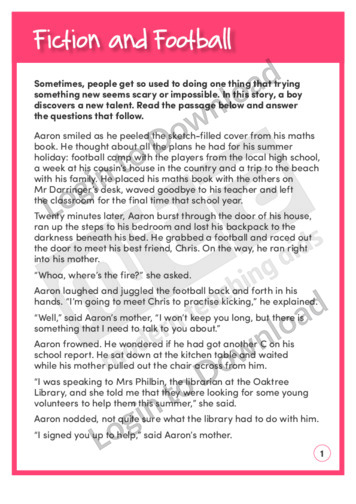This graphic organiser, ‘Asking Questions’ prompts students to create questions using one word from the left column and one word from the top row. It is a great resource that assists students in creating progressively more complex, higher-order questions when analysing texts. It can also be used by teachers to develop questions that are targeted …More
This worksheet, ‘Asking Questions about the Winter Olympics’ prompts students to create questions using one word from the left column and one word from the top row that can help in discussing and researching the Winter Olympic Games. It is a great resource that assists students in creating progressively more complex, higher-order questions to prompt …More
This understanding text exemplar, ‘Asking Questions and Predicting the Future’ provides a model of a completed understanding text worksheet. It is aimed at developing students’ awareness of semantics and how asking questions will help them clarify or make sense of what they have read and predict what might happen next.
This understanding text exemplar, ‘Asking Questions and Predicting the Future’ provides a model of a completed understanding text worksheet. It is aimed at developing students’ awareness of semantics and how asking questions will help them clarify or make sense of what they have read and predict what might happen next.
This writing text reference worksheet, ‘Author’s Purpose and Opinions’ explains to students how to form an opinion and the different purposes an author writes for, such as to inform, persuade, entertain and teach.
This reading comprehension activity, ‘Back to the Moon!’, asks students to answer comprehension questions on a text about rocket scientists researching the Moon.
This Poetry worksheet, ‘Backyard Friends’, features a poem about the squirrels, rabbits, raccoons, and other small animals that visit a garden. It encourages students to use a variety of strategies to interpret the poem and includes questions about conclusion, figurative language, emotion, validity, predicting outcome, and detail. Answer sheet provided with file download.
This Reading Comprehension worksheet, ‘Baffling the Enemy’, features an informational text about the work of Navajo code talkers in the U.S. Marines during World War II. It encourages students to use a variety of strategies to interpret the text and includes questions about figurative language, comparison/contrast, fact/opinion, detail, sequence, making a judgment, making an inference, …More
This reading comprehension activity, ‘Bear and Molly’ asks students to answer comprehension questions about a story in which a boy takes care of his aunt’s two puppies. It is aimed at developing students’ awareness of semantics and encourages them to draw conclusions, recall information and form opinions.
This analysing text worksheet ‘Become a Puppeteer’ supports students to use various strategies to understand a procedural text about creating a puppet show. It is aimed at encouraging students to deconstruct the text in order to gain a deeper understanding of its purpose, to recall specific details from the text, to look critically at words …More
This reading comprehension activity, ‘Being Neighbourly’ asks students to answer comprehension questions about a passage from the book ‘Little Women’. It is aimed at developing students’ awareness of semantics and encourages them to form opinions and think about the author’s purpose.
This analysing text worksheet ‘Betsy’s Birthday Pony’ supports students to use various strategies to understand a narrative text about a girl who wants a pony. It is aimed at encouraging students to recall specific details from the text and to look critically at words in order to ascertain their particular meaning in context, as well …More
This reading comprehension activity, ‘Black Beauty’ asks students to answer comprehension questions about a story by Anna Sewell. It is aimed at developing students’ awareness of semantics and encourages them to recall information, form opinions and make predictions.
This reading comprehension activity ‘Brand-name Schools’, asks students to answer comprehension questions on a text about brand name products in schools.
This Reading Comprehension worksheet, ‘Building on Flood Plains’, features an informational text about whether building permits should be granted in flood-prone areas. It encourages students to use a variety of strategies to interpret the text and includes questions about fact/opinion, reasoning, cause and effect, comparison/contrast, author’s purpose, importance, persuasion, questioning, genre, vocabulary, and drawing a …More
This graphic organiser, ‘Cause and Effect’ combines brainstorming and mind mapping skills to build an understanding of the relationship between four different causes and their effect(s). It helps students to visualise all possible connections instead of simply focusing on the obvious and can be used as a pre-writing task to logically organise ideas.
This graphic organiser, ‘Cause and Effect’ combines brainstorming and mind mapping skills to build an understanding of the relationship between six different causes and their effect(s). It helps students to visualise all possible connections instead of simply focusing on the obvious and can be used as a pre-writing task to logically organise ideas.
This graphic organiser, ‘Cause and Effect’ combines brainstorming and mind mapping skills to build an understanding of the relationship between six different causes and their effect(s). It helps students to visualise all possible connections instead of simply focusing on the obvious and can be used to logically organise ideas during a post-reading, comprehension task.
This graphic organiser, ‘Cause and Effect’ combines brainstorming and mind mapping skills to build an understanding of the relationship between three different causes and their effect(s). It helps students to visualise all possible connections instead of simply focusing on the obvious and can be used to logically organise ideas during a post-reading, comprehension task.
This graphic organiser, ‘Cause and Effect’ combines brainstorming and mind mapping skills to build an understanding of the relationship between six different causes and their effect(s). It helps students to visualise all possible connections instead of simply focusing on the obvious and can be used to logically organise ideas during a post-reading, comprehension task.
This graphic organiser, ‘Cause and Effect Chain’ combines skills in brainstorming and mind mapping to visually represent the relationship between a chain of events and subsequent consequences. It can be used as a pre-writing task, to logically organise ideas, or a post-reading comprehension activity.
This graphic organiser, ‘Cause and Effect Hand’ helps students to think critically after reading a text to further develop and understand the story.
This graphic organiser, ‘Cause and Effect Sequence’ assists students to graphically organise the relationship between an event, its causes and resulting consequences. It can be used as a post-reading comprehension activity to prompt the use of higher-order, critical thinking skills.
This graphic organiser, ‘Character and Me Wheel’ helps students to better know themselves, by thinking about their defining characteristics.
This graphic organiser, ‘Charlotte’s Web and Me Wheel’ asks students to compare themselves to four main characters in ‘Charlotte’s Web’ and write sentences that evaluate how they are like each character.
This reading comprehension activity ‘China’s Big Dam’, asks students to answer comprehension questions on a text about China’s new dam.
This reading comprehension activity, ‘China’s Dam is a Good Idea’, is available at three different reading levels to allow for differentiated instruction. It asks students to answer comprehension questions on a text about China’s new dam.
This reading comprehension activity ‘China’s Dam Is a Good Idea’, is available at three different reading levels to allow for differentiated instruction. It asks students to answer comprehension questions on a text about China’s new dam.
This reading comprehension activity ‘China’s Dam Is a Good Idea’, is available at three different reading levels to allow for differentiated instruction. It asks students to answer comprehension questions on a text about China’s new dam.
This graphic organiser, ‘Circles of Life’ asks students to record the qualities and accomplishments of a famous person and predict what might have been if they had lived longer.
This graphic organiser, ‘ Circles of Life and Shakespeare’s Ghosthunter’ asks students to record the qualities and accomplishments of William Shakespeare and predict what plays he may have written if he had lived longer.
This Reading Comprehension worksheet, ‘Circus Comes to Town’, features a narrative text about a boy meeting a young circus clown. It encourages students to use a variety of strategies to interpret the text and includes questions about drawing a conclusion, making an inference, detail, validity, cause and effect, and genre. Answer sheet provided with file …More
This reading comprehension exemplar, ‘Colonial Cooking’ provides a model of a completed reading comprehension worksheet. It is aimed at increasing students’ awareness of semantics and encourages them to think about clarifying and predicting information in an informative text.
This graphic organiser, ‘Compare and Contrast Triangle’ provides a blank, triangular diagram to assist students in organising the similarities and differences between ideas. Having students evaluate and analyse concepts and then organise these ideas visually, provides a scaffold for all students to engage with higher-order thinking skills. It can be used as a whole class …More
This Reading Comprehension worksheet, ‘Conservation Pioneers’, features two biographical texts about the early conservationists John Muir and Gifford Pinchot. It encourages students to use a variety of strategies to interpret the text and includes questions about key biographical facts, main contributions, and comparison/contrast.
This graphic organiser, ‘Contexts and Connections’ provides a graphical mind map that students can use to organise information and understand the meaning of new vocabulary. The resource prompts students to identify the new word, describe it using examples and non-examples and then create or find the definition. It also encourages students to make connections to …More
This Reading Comprehension worksheet, ‘Cousins in the White House’, features two biographical texts about the U.S. presidents Theodore Roosevelt and Franklin D. Roosevelt. It encourages students to use a variety of strategies to interpret the texts and includes questions about making an inference, detail, comparison/contrast, predicting an outcome, and forming an opinion.
This reading comprehension activity, ‘Crushed by the Quake’, asks students to answer comprehension questions on a text about earthquakes in Turkey.
This graphic organiser, ‘Cursing the Causes and Effects’ asks students to choose events that have many results and to write summaries in paragraph form.
This reading comprehension activity ‘Dazzling Diamonds’, asks students to answer comprehension questions on a text about the history and mining of diamonds.
This facts and opinions exemplar ‘Debate Team’ shows students how to locate the facts and opinions in an example text. It is aimed at introducing students to forming and explaining their opinions, and shows how the author decided her position on a topic, then used facts to support her opinion.
This author’s purpose exemplar ‘Dena’s New Puppy’ supports students to identify the author’s purpose for writing a text. It encourages students to look critically at the text in order to ascertain whether the author wrote it to persuade, teach or entertain the reader.
This reading comprehension activity, ‘Dino Eggs by the Dozen’, asks students to answer comprehension questions on a text about the discovery of dinosaur eggs.
This reading comprehension activity, ‘Dino Eggs by the Dozen’, asks students to answer comprehension questions on a text about the discovery of dinosaur eggs.
This reading comprehension activity ‘Dinosaurs with Feathers’, asks students to answer comprehension questions on a text about dinosaur fossils found in China.
This reading comprehension activity ‘Do Athletes Make Too Much Money’, asks students to answer comprehension questions on a text about the incomes of athletes.
This reading comprehension activity ‘Do Kids Look Up to Athletes Too Much?’, asks students to answer comprehension questions on a text about the appropriateness of athletes as role models.
This reading comprehension activity, ‘Don’t Ever Kiss a Peacock!’, asks students to read a story and answer comprehension questions about a birthday party at the zoo.
This understanding text reference worksheet, ‘Drawing Conclusions’ is aimed at increasing students’ awareness of semantics, drawing conclusions and making judgements.
This analysing text exemplar ‘Emily Meets Jacob’ shows students how to identify the structure and genre of a narrative text. It is aimed at encouraging students to identify details from the beginning, middle and end of the text as well as identifying whether the story is an example of narrative or everyday text.
This reading comprehension activity, ‘Exercise Your Right to a Healthier Future’ asks students to answer comprehension questions about exercise and leading a healthy life. It is aimed at developing students’ awareness of semantics and encourages them to form opinions and think about the author’s purpose.
This reading comprehension activity ‘Exploring the Deep’, asks students to answer comprehension questions on a text about Sylvia Earle, a marine biologist who explores the ocean.
This reading comprehension activity, ‘Fearless Fashion’, asks students to answer comprehension questions on a text about compulsory school uniforms.
This reading comprehension activity, ‘Fiction and Football’ asks students to answer comprehension questions about a story in which a boy discovers that writing fiction can be as fun as football. It is aimed at developing students’ awareness of semantics and encourages them to look critically at the language used in a narrative text in order …More
It�s that easy!

